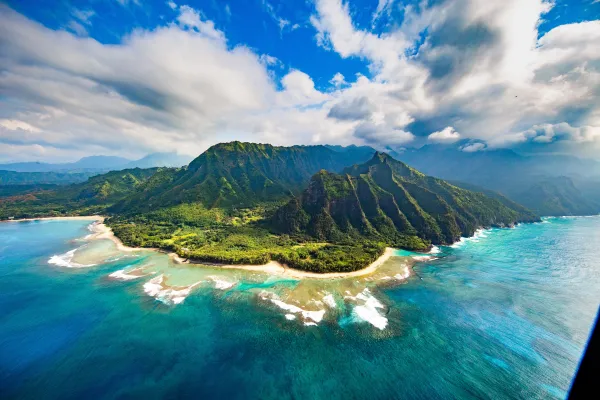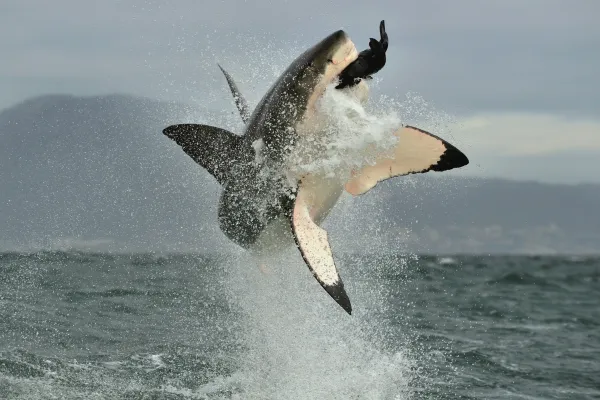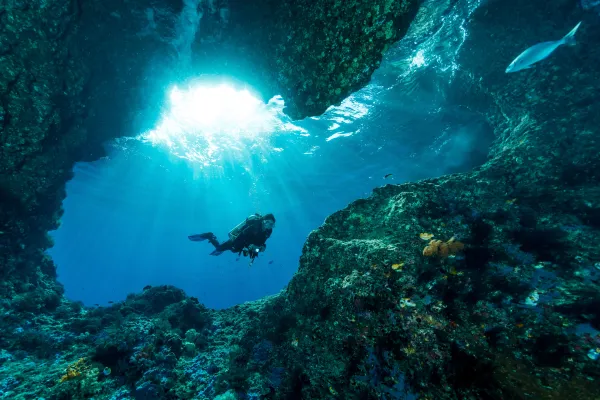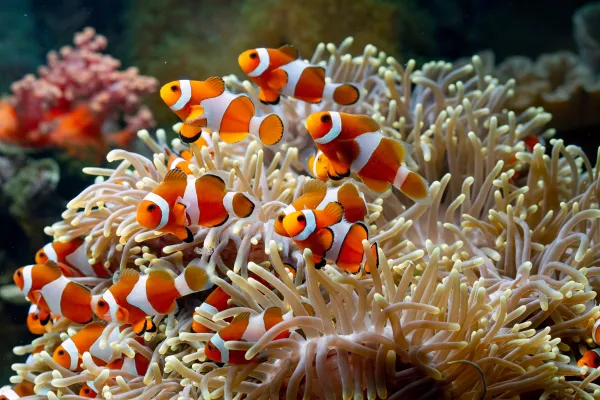The future of South Africa's white sharks
In Part I of our blog post on South Africa's Great White Sharks, we delve into the mysterious disappearance of these majestic creatures off the coast of Gansbaai, once hailed as the "Great White Shark Capital of the World." Unraveling the enigma surrounding their decline, we explore the ecological shifts and human impacts that have contributed to this significant change in the region's marine landscape.
Part II shifts the focus to the collaborative efforts of Dr. Sara Andreotti and shark conservation specialist Mike Rutzen, presenting an in-depth analysis of the research results they have meticulously gathered. Through their dedicated work, we gain valuable insights into the current status of the remaining shark populations, shedding light on crucial conservation measures that can aid in the protection and restoration of these iconic apex predators.
Low numbers, limited diversity
The primary purpose of the study, published in 2016, was to establish an idea of the health of the region's great white shark population. To do so, Andreotti and Rutzen employed both statistical and genetic identification methods in their research. Furthermore, their findings shed light on the genetic diversity and demographic structure of the great white shark population, offering valuable insights for conservation efforts in the region.

Combining identification methods
Firstly, they collected close to 5000 dorsal fin identifications. They used a novel dorsal fin categorising system to identify individual sharks that functions similarly to a barcode. It involves dividing dorsal fin photographs into three separate sections. Each of these needs to check out perfectly against sighted individuals to confirm a match. In this way, Rutzen and Andreotti could identify 426 sharks in total. They could also tell which sharks they had already seen and which they had not.
Additionally, they obtained genetic samples from 263 individual white sharks they sampled around the coastline. They compared the two “fingerprint” data streams to ensure accuracy.
Great white sharks – critical implications
The combined analysis of genetic material and fin identification revealed two critical facts: Firstly, the total number of great white sharks along the South African coast stood between 522 and 353 remaining individuals. Secondly, the genetic analyses showed that the great whites occurring along the South African coast had an extremely low genetic diversity and a low number of breeders. It revealed only four maternal lineages and that 89 percent of all the sharks share just one of them. Furthermore, these findings underscore the urgent need for heightened conservation efforts, particularly for endangered sharks like the great white, whose dwindling numbers and genetic homogeneity pose significant threats to their long-term survival.
According to Dr. Andreotti, these results suggest "that great whites off South Africa's coastline have the lowest genetic diversity of any white shark population in the world studied to date". She added that low genetic diversity is a predictor of decreased ability of a population's ability to reproduce successfully. This typically correlates to a drop in numbers of the species. "Based on the genetic results of this study we can only conclude that the low levels of genetic diversity would prevent this species from recovering quickly to a healthier population status," she said. Great white sharks weigh 2.5 tons or more.

Sobering great white shark statistics
The implications of the study's results were alarming. For the first time in recent decades, people became acutely aware of the precarious position of the South African white shark population. Given the multiple threats facing great white sharks, combined with the many years it takes them to reach sexual maturity, a population of fewer than 550 individuals spelled disaster for their long-term survival.
However, the dramatic decline in great white shark numbers only came into clear focus in the past three years. Their disappearance has caused a shift in the local ecology of False Bay and Gansbaai. Smaller sharks are now sighted more often in areas historically dominated by white sharks.
Orcas as the primary cause?
However, the question remains whether the orcas were the primary cause of the departure of great whites from the area. Alternatively, the orca attacks may have been the proverbial "straw that broke the camel's back" for the remaining population. Perhaps the low numbers of white sharks reduced competition for food resources, making it easier for the orcas to inhabit the area.
Whichever of these theories is true, the 2016 study suggests the white shark population was in danger long before 2017. Like many things about great whites, the reasons for this are hazy at best.
Multi-dimensional risks
Most shark experts agree that the risks facing great whites, both in South Africa and globally, are multi-dimensional. The problems facing their long-term survival go deep and have been perpetuated for years. They include climate change, pollution, shark nets, drumlines, longline fishing, poaching, illegal trade of shark fins and jaws, habitat loss, and depletion of food sources. Great white sharks have around 300 serrated, triangular teeth arranged in several rows.

What does the future hold for great white sharks in South Africa?
Scientists estimate that great white sharks have been inhabiting our oceans for hundreds of millions of years. It is tragic that they are now possibly on the brink of extinction. If there is one thing we know about white sharks, it is that we know virtually nothing at all.
We have no idea where or how they mate or where their shark nurseries are located. Likewise, we don't know what average age they reach, nor exactly how long they take to sexually mature.
What we do know is that they play a vital role in sustaining the health of our oceans. The extinction of these magnificent apex predators could have a devastating effect on the marine environment. This is deeply concerning considering that our seas are vital to the planet's survival and already under severe stress.
Many people hang on to the hope that great white sharks will one day return to the shores of Gansbaai. However, Dr Andreotti doesn’t share the same optimism:
"White shark numbers have been reducing for decades,” she said. Although we don’t know with certainty if their disappearance from False Bay and Gansbaai is temporary, we do know all too well of all the human-related stressors we are putting these animals through. So, while more evidence is gathered, I would urge government and media alike to follow a precautionary approach and act as if the white shark population has crashed, so that we can work to reduce the threats we can act upon."

The way forward
If Dr Andreotti's suspicions are true, it may already be too late to sustain the long-term survival of South Africa’s great white sharks. Even more tragically, many other shark and marine species are facing the same fate. Apart from great whites, most shark species are not protected under South African law.
They are fair game for fishermen, commercial and private alike. Moreover, many of them are "data-deficient," meaning that not enough research has been done to classify them according to an IUCN status. As a result, urgent action is needed to implement comprehensive conservation measures, including stricter regulations and increased research efforts, to safeguard the future of these vulnerable marine species and preserve the delicate balance of ocean ecosystems.
Bronze sharks on the rise
It is also interesting to see that, since the great white sharks departed from the Gansbaai coast, bronze whaler sharks have moved into the bay. This is not surprising given that, when top predators decline in numbers, smaller predators are expected to increase and be seen occupying larger areas. The beautiful and interactive bronze whaler sharks reach an average length of around 3.5 metres. Their appearance in the bay has been the saving grace of the town’s cage diving industry, which is now relying solely on their presence for its survival.
However, local fishermen have also begun honing in on these sharks as commercial catches. This sparked an outcry from conservationists and ecotourism ventures. Consequently, there was in a change of fishing regulations, with some protection afforded to bronze whalers in the area used by the cage diving operators.

Improving marine conservation
South Africa was the first country in the world to protect white sharks back in 1991, and yet this wasn’t sufficient to secure the survival of a healthy population just 30 years later. If our seas stand any chance, the world needs to learn from past mistakes and start focusing on conserving marine species more efficiently before they reach the point of no return.
Supporting conservation projects is crucial in this endeavor, and fortunately, there are numerous initiatives dedicated to the protection of marine wildlife, ranging from community-based efforts to large-scale research programs. By backing these projects and fostering a collective commitment to marine conservation, we can strive towards ensuring a brighter future for our oceans and the myriad species that call them home.






